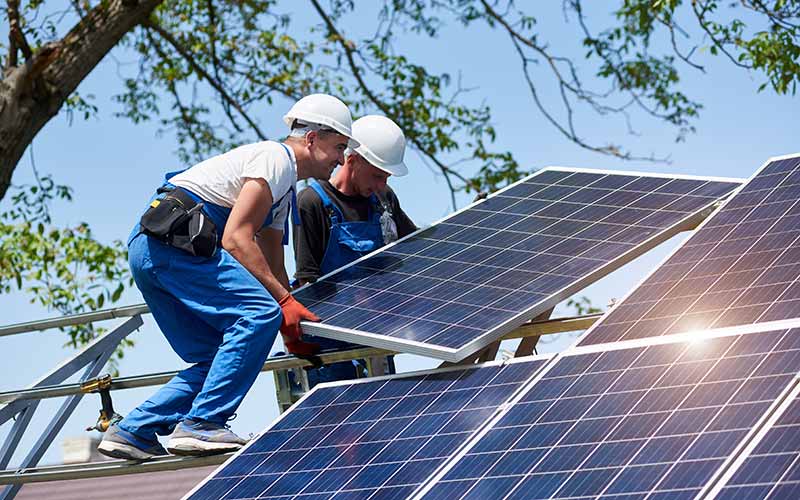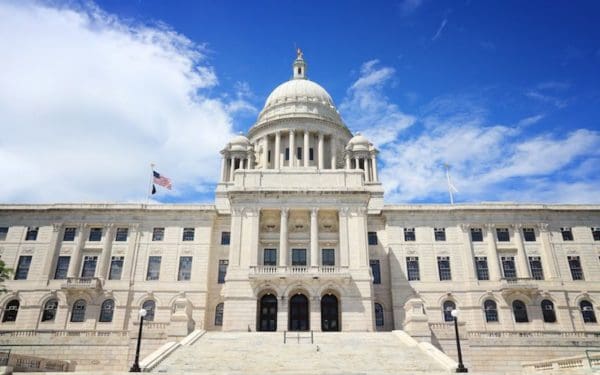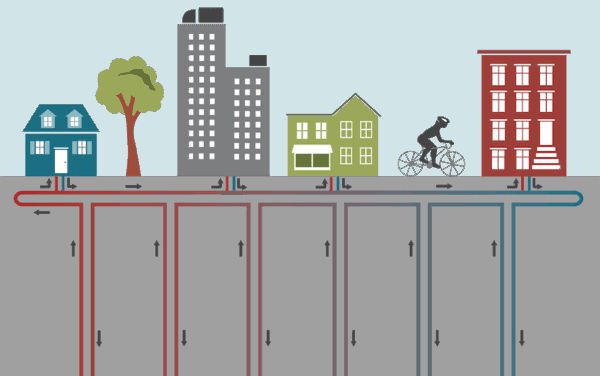
Calling for more heat pumps and solar panels is great. But it only gets us so far if we don’t ensure that everyone can reap the benefits. Photo Credit: Shutterstock
Massachusetts has a reputation as a climate leader. We passed one of the first climate laws in the nation and consistently rank high on energy efficiency. But we can’t rest on those laurels. That landmark climate law needs an update. Our energy efficiency programs fail to reach low-income and communities of color. And we’re also overly dependent on dirty fossil fuels. I know we can do better.
State agencies are currently planning how Massachusetts will lower its climate-damaging emissions over the next 10 years. However, the Clean Energy and Climate Plan they’ve drafted doesn’t ensure that the state’s climate mandates will be met and neglects to meaningfully integrate environmental justice. If rubber-stamped as is, we risk not reaching our climate targets and continuing to put historically marginalized communities at risk from pollution and dangerous climate impacts.
To that end, CLF is asking the state to improve this plan. It must clearly outline how we will reach our climate targets and better integrate environmental justice into every policy. This will go a long way towards building a healthy, resilient Massachusetts for all of its residents.
What Is the 2030 Clean Energy and Climate Plan?
Massachusetts’s Global Warming Solutions Act requires the state to lower its climate-damaging emissions at least 80% by 2050. (Through executive action in April 2020, Governor Baker strengthened that target to net zero by 2050). The law also directs the Executive Office of Energy and Environmental Affairs to set interim targets every 10 years – and create plans for how to meet them.
This state agency is currently working on the Clean Energy and Climate Plan for 2030. It will outline how the Commonwealth will tackle climate-damaging emissions across a range of industries and activities – from electricity to transportation to home heating.
But the most recent draft of this plan doesn’t go far enough in its blueprint for tackling emissions. What’s more, it fails to address a long history of racist policies that have led to Black, Brown, Indigenous and low-income communities to bear the brunt of pollution and climate impacts – from unhealthy levels of air pollution to disproportionately hotter neighborhoods during summer heat waves. As we plan for how the Commonwealth will transition to a clean energy economy between now and 2030, we must prioritize actions that benefit historically marginalized communities. If the plan isn’t people-focused, we’re not doing it right.
This Plan Must Bake Environmental Justice into Every Solution
Any plan to lower emissions must not only consider how to cut the largest sources of carbon pollution – in our case, transportation and heating – but also how to ensure all Massachusetts residents have equal access to its solutions. Calling for more heat pumps to replace dirty gas furnaces is great. But that will only get us so far if we don’t ensure that renters, those living with low incomes, and other traditionally underserved communities can reap the same benefits of getting off gas and oil as wealthier, whiter communities.
With thoughtful planning now, we can lower emissions while uplifting everyone in the Commonwealth. Below are our top recommendations for how to make the Clean Energy and Climate Plan a more effective and equity-focused tool over the next 10 years.
- Make clean home heating affordable for everyone. Most Massachusetts residents rely on fossil fuels to heat their homes. The Commonwealth must prioritize the switch from oil and gas furnaces to cleaner electric heat pumps. In particular, the state must provide incentives to make heat pumps more affordable for low- and middle-income families. Ensuring that everyone can switch to a cleaner form of home heating will help lower emissions statewide. It can also cut indoor air pollution and save people money down the road.
- Include clear goals for accessible, clean transportation options. Transportation accounts for almost 40% of climate-damaging emissions in New England. Massachusetts must prioritize updating its cars, trucks, buses, and trains to run on clean sources of electricity. While making this switch, the State regulators should start by adding zero-emission buses and trains in communities that have, so far, lacked clean transit options. As well, the plan should set goals for the Commonwealth to transition vehicle fleets – like school buses and delivery vehicles – to electric models.
- Lower air pollution in overburdened communities. Those of us living in Black, Brown, Indigenous, immigrant, and communities with low incomes are more likely to grow up in the shadow of a polluting power plant or beside a major highway or airport. These are pollution hotspots, and State regulators must plan how they will correct this longstanding injustice. The Climate Plan should commit to setting annual pollution reduction targets, which will improve the air quality in these neighborhoods year over year.
- Protect and expand tree cover, which makes city living easier for everyone. The urban heat island effect makes neighborhoods with less tree cover significantly hotter on summer days than areas with more green space. The communities who suffer the most from this inequitable landscaping are already overburdened by air pollution – Black, Brown, Indigenous, and low-income neighborhoods. The Climate Plan must ensure that real estate developers and cities stop cutting down mature trees and plant new trees. It also should create a roadmap for expanding tree cover throughout Massachusetts.
What You Can Do to Help
The State needs to hear from you. CLF and our partners are pushing Massachusetts to improve the 2030 Clean Energy and Climate Plan by centering justice in all of its actions moving forward. You can do the same.
Submit comments to state regulators on the plan, highlighting the above issues. You can also attend a webinar on Monday, March 15, from 6:30–8:00 p.m. and speak up about what’s missing in the plan.
Together, we can build a healthy, resilient Massachusetts for all of its residents.



